Doepfer A-188-1 Handleiding
Doepfer
Niet gecategoriseerd
A-188-1
Bekijk gratis de handleiding van Doepfer A-188-1 (30 pagina’s), behorend tot de categorie Niet gecategoriseerd. Deze gids werd als nuttig beoordeeld door 48 mensen en kreeg gemiddeld 4.4 sterren uit 24.5 reviews. Heb je een vraag over Doepfer A-188-1 of wil je andere gebruikers van dit product iets vragen? Stel een vraag
Pagina 1/30

DOEPFER
DOEPFERDOEPFER
DOEPFER System A-100 BBD Module A-188-1
1
Fig. 1: A-188-1 Controls and In/Outputs
1. Introduction
Module A-188-1 is a so-called Bucket Brigade Device
module (abbr. BBD). BBDs have been used to delay
audio signals before digital delays dethroned the BBD
based effect units. But BBDs have some very unique
advantages (or disadvantages dependent on the point of
view) over the digital counterpart which result from the
special properties of the BBDs. BBD circuits can be
treated as a chain of Sample&Hold units (S&H) which
pass on their voltages to the next S&H in the chain at
each clock pulse. A more detailed explanation – including
the different types of BBDs – can be found in the
following chapter.
In any case the sounds generated by module A-188-1 are
very special. Typical applications are: Flanger, Chorus,
Analog Delay or Karplus/Strong synthesis. But as the A-
188-1 has a lot of very unique features (voltage controlled
clock rate / delay time with extreme range, polarity
switches for the CV inputs, feedback and BBD out/mix,
clock and CV output of the high speed VCO, BBD clock
input, feedback insert, feedback up to self-oscillation) a
lot of unusual applications can be realized with the
module (e.g. delay controlled by ADSR, random,
envelope follower or sequencer with positive or negative
effect). The A-188-1 also has no built-in anti-aliasing filter
in order not to limit the possibilities of the module. For this
the CV out is intended.


DOEPFER
DOEPFERDOEPFER
DOEPFER System A-100 BBD Module A-188-1
2
2. Basic Principles
As mentioned in the introduction a BBD circuit can be
regarded as a chain of Sample&Hold units (S&H) which
pass on their voltages to the next S&H in the chain at
each clock pulse. From this also the name Bucket
Brigade Device is derived as each stage of the BBD can
be treated as a bucket. At each clock pulse the content of
each bucket is forwarded to the next bucket in the chain
and the current bucket is filled with the contents of the
preceeding bucket.
Fig.2: Bucket Brigade
Remark: In reality two "buckets" are required for each
stage as the content of a bucket has to be stored
temporarily in a "slave bucket" before it can be filled with
the contents of the preceeding bucket, in contrast to a
"real" bucket brigade not the buckets are passed on but
only the contents.
In the BBD the water is replaced by analog voltages
which again represent audio signals. The first bucket (1)
is the audio input, the last bucket (n) is the output of the
BBD. As in reality there are losses while the water (resp.
voltage) is passed on, because some drops of water go
wrong and at the end of the chain not the same amount of
water (resp. not exactly the same voltage) appears. In a
BBD the buckets are replaced by capacitors and analog
switches. As the capacitors of a BBD are very small
(some pF only) even the time required to pass on the
input to the output is crucial as the capacitors loose their
charges if it takes too long. This is why a minimum clock
frequency is specified for each BBC circuit. Below this
frequency the flawless operation of a BBD is not
guaranteed. In the A-188-1 intentionally frequencies can
be used that go below this value to obtain special "dirty"
and "crunchy" effects.
BBD circuits are available (or rather have been available)
with different number of stages. Usual numbers are 128,
256, 512, 1024, 2048 or 4096 stages. Currently (as of
spring 2006) only devices with 1024 and 2048 are still in
production. Other BBDs are obsolete, hard to find and
very expensive. Therefore only the versions of the A-188-
1 with 1024 and 2048 stages are standard products. All
other versions of the A-188-1 are available only while
stocks of the corresponding BBD circuits last.
The number of stages defines the delay time that
corresponds to a certain clock frequency. The higher the
number of stages, the longer is the delay. The higher the
clock frequency, the shorter is the delay.
Example: At 100kHz clock frequency the delay time is
10.24 ms for a BBD with 1024 stages and 20.48 ms for a
BBD with 2048 stages.
Product specificaties
| Merk: | Doepfer |
| Categorie: | Niet gecategoriseerd |
| Model: | A-188-1 |
Heb je hulp nodig?
Als je hulp nodig hebt met Doepfer A-188-1 stel dan hieronder een vraag en andere gebruikers zullen je antwoorden
Handleiding Niet gecategoriseerd Doepfer

31 Maart 2024

8 Juli 2023

6 Juli 2023

4 Juli 2023

3 Juli 2023

3 Juli 2023

2 Juli 2023

2 Juli 2023

30 Juni 2023

30 Juni 2023
Handleiding Niet gecategoriseerd
- Orava
- Simplicity
- Graco
- Hirschmann
- InSinkErator
- Panduit
- Cosatto
- Gehmann
- Wolf
- Das Keyboard
- OSEE
- Baby Trend
- Tablo
- Akai
- JK Audio
Nieuwste handleidingen voor Niet gecategoriseerd
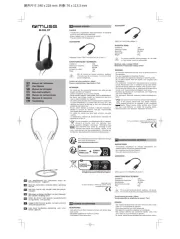
2 Augustus 2025
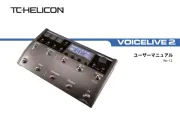
2 Augustus 2025
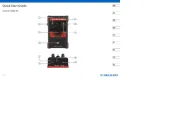
2 Augustus 2025

2 Augustus 2025
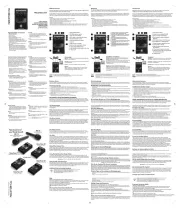
2 Augustus 2025
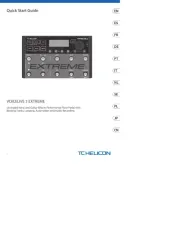
2 Augustus 2025

2 Augustus 2025
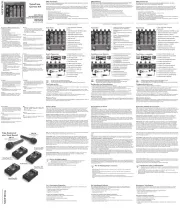
2 Augustus 2025
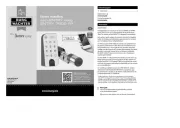
2 Augustus 2025
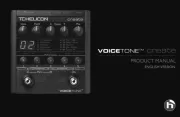
2 Augustus 2025